Electrified mid-sized SUV from GWM’s Haval SUV sub-brand could be the thinking person’s plug-in. If you don’t mind a big and heavy bruiser.
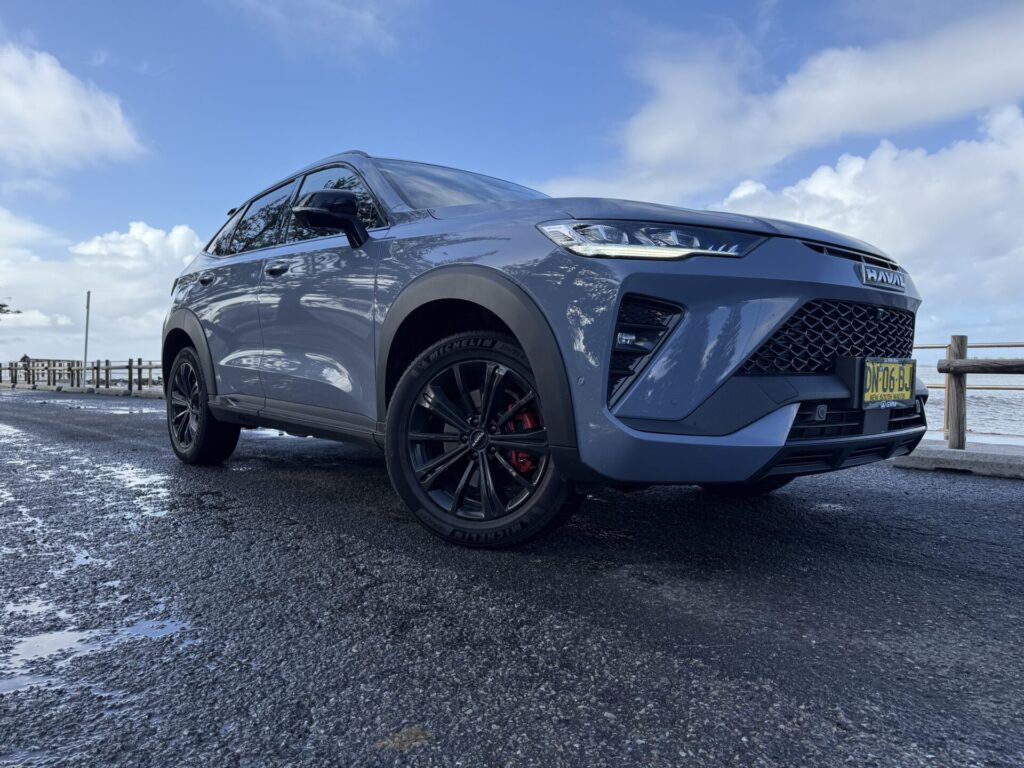
A few years ago when I was at WhichCar, I drove the Haval H6 Ultra hybrid. As I mention in that review, I’d been in a couple of Haval’s cars, the unfinished Jolion and the basic H6. While both reasonable cars – compelling because they were and are cheap – they were just transport.
The hybrid was actually a good car and pound-for-pound, the mid-$40k driveaway price in 2022 when the world was still largely either on fire or coughing a lot was good value. Not sure it had Toyota quaking in its slow-moving boots, but there we are.
Plug-in hybrids or PHEVs are very much a thing now and you may have seen that we drove one from the other end of town a little while ago, the BMW X3. I was surprised by the electric range on that thing but I got a real shock on the EV range on this one.
How much is the Haval H6 GT PHEV and what do I get?
Haval H6 Lux PHEV: $44,990
Haval H6 Ultra PHEV 2WD: $47,990 (driveaway)
Haval H6 GT PHEV: $54,485 (driveaway)
There is a whole range of H6 plug-in hybrids and for that alone, Haval has pulled a blinder. I think only Mitsubishi has a series of PHEVs in its Outlander range and there’s a new one of those coming which might give this one a run for its money.
Anyway, for your money you get:
- 19-inch black alloy wheels,
- auto LED headlights
- LED tail-lights and running lights
- fake leather with Alcantara-like inserts
- powered front seats with heating and ventilation,
- leather heated steering wheel
- head-up display
- 10.25-inch digital dash
- 12.3-inch media screen
- powered tailgate.
- panoramic sunroof
- 360-degree cameras
- adaptive cruise control
- dual-zone climate control
- wireless phone charging
- front and rear parking sensors
- auto parking
- tyre repair kit
Safety package includes:
- six airbags
- lane-keep and lane-change assist
- forward AEB (with pedestrian and cyclist detection)
- rear cross-traffic alert
- rear AEB
- blind-spot monitoring
The only available option is the $495 premium paint, which was on this car, a quite polarising matt grey, or primer grey as co-pilot Mark would have it.
That’s a decent amount of stuff. The warranty weighs in at seven years/unlimited kilometres (150,000km for business buyers such as ride share) and the big battery’s warranty is eight years.
Fixed price servicing runs for five years and will cost you $1980 for the duration, with prices bouncing between $240 and $702. It’s only a hundred bucks over the cheaper H6 GT and could – could – be much cheaper to run.
The H6 GT PHEV is up against the aforementioned Outlander from Mitsubishi and GWM’s compatriot, the BYD Sealion 6 Premium. The Outlander will cost more to buy at the highest spec and by quite a margin.
Look and feel
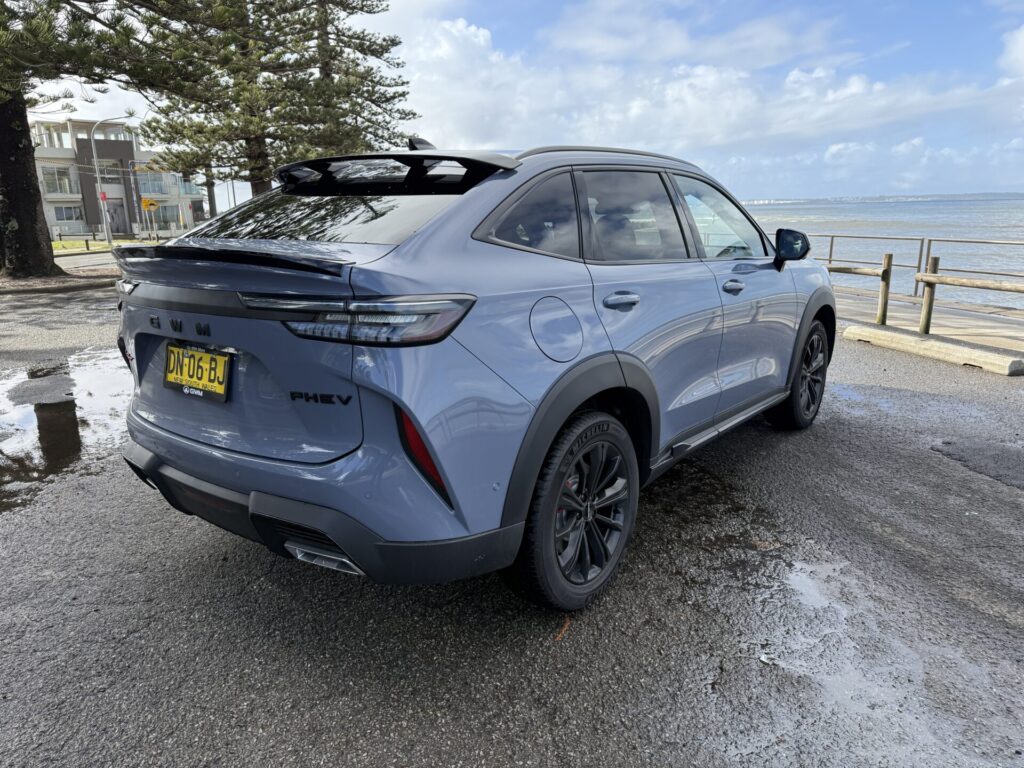

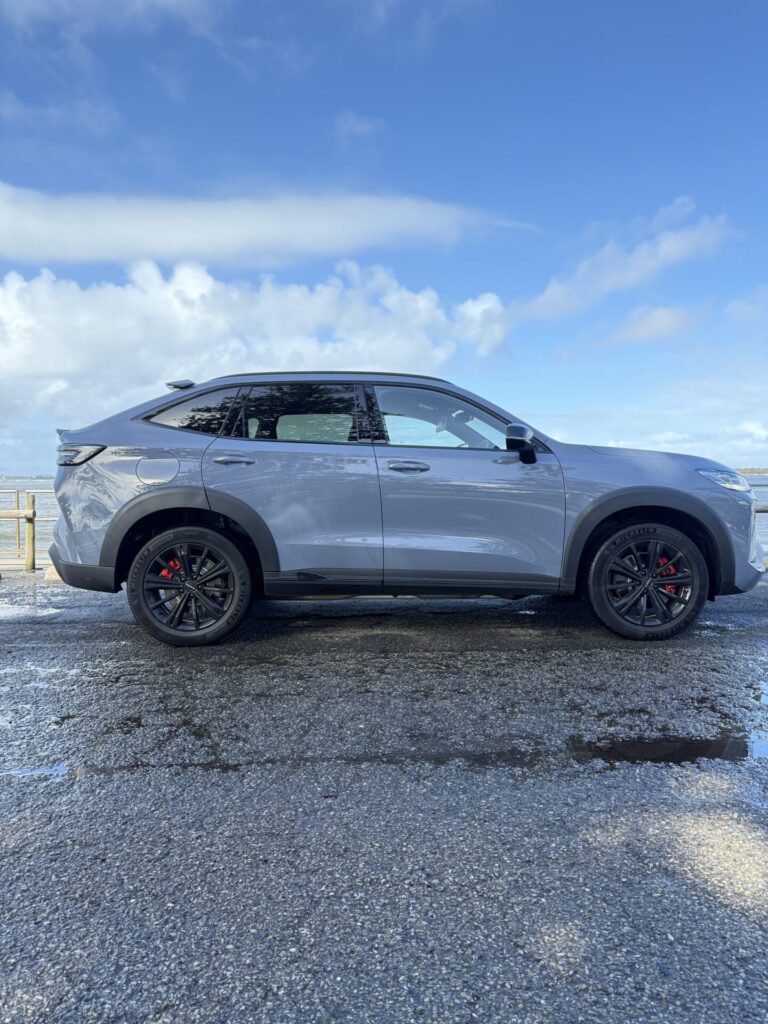
My terrible photos don’t really do the H6 justice but, let’s be honest, it’s not really a looker. It’s not ugly, not by any stretch, but it’s tall and a bit overbearing. It looks a bit nuggety in the side profile and compared to other H6’s, has that fastback look so beloved of German premium manufacturers.
This colour doesn’t do it many favours either. I don’t mind this colour but it doesn’t exactly bring out the car’s best. It’s a bit more brutal looking than the non-GT variants which I gather is the idea but the clear taillight lenses somewhat take the intended edge off and make them look aftermarket.
The blacked-out stuff works, though and I like the chunky stance. At least in profile.
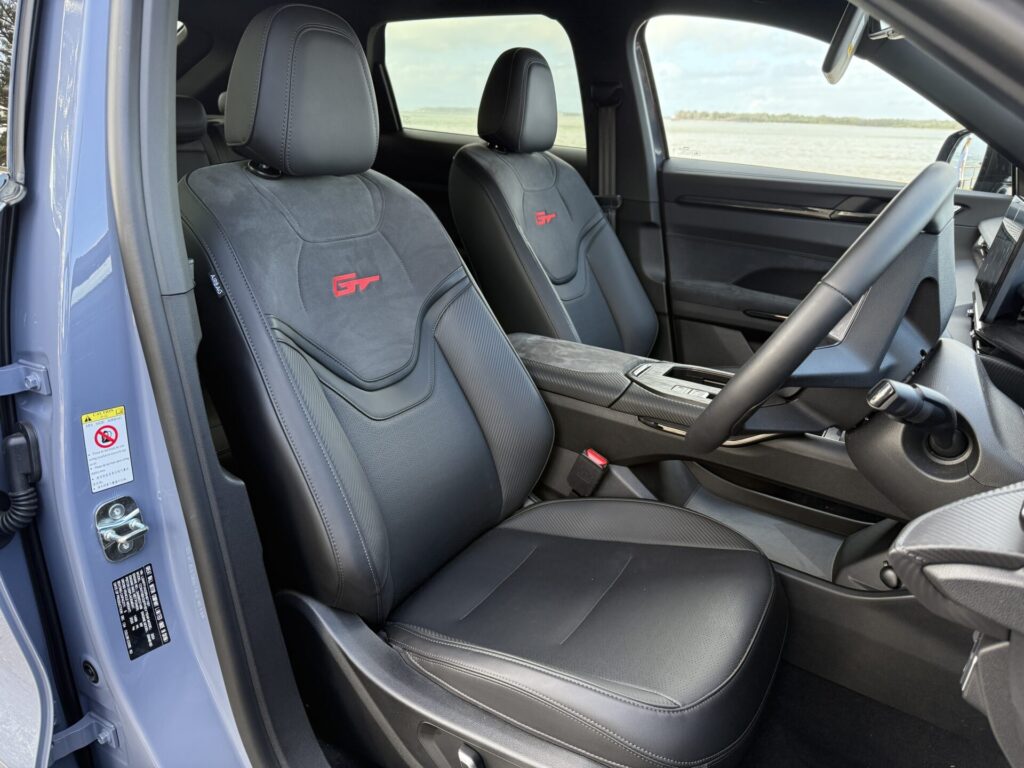
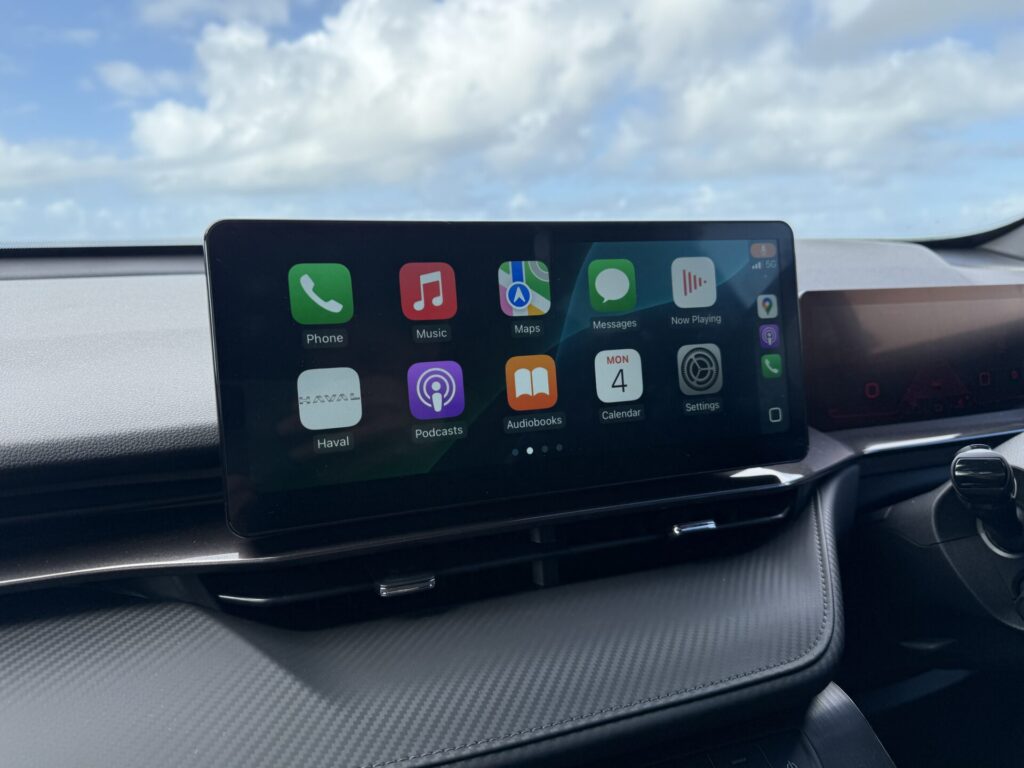
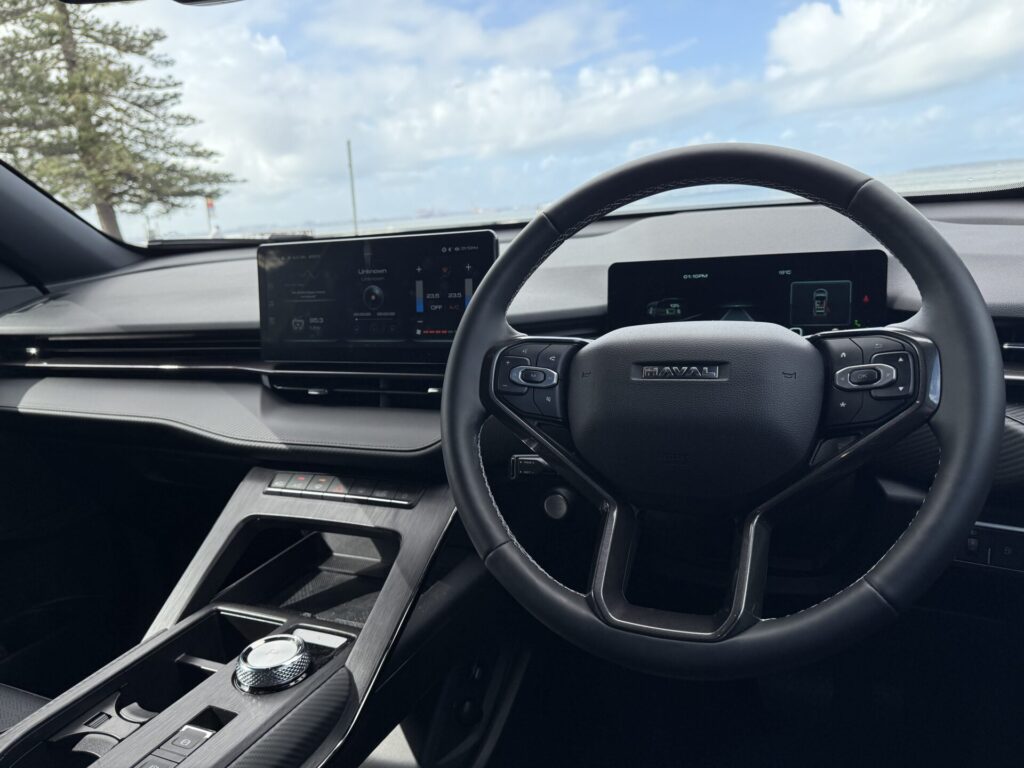
The interior is rather more successful. I don’t think much has changed since I first drove the H6 in 2022. The fake leather/Alcantara combination is really quite good although the front seats still feel a little small.
It’s baffling a few running changes haven’t been applied, like tilting the central screen slightly towards the driver, perhaps adding a few buttons and sorting out the thin-rimmed steering wheel.
Of particular niche irritation is the fact that the USB-A port that will support Apple CarPlay and Android Auto connectivity is on the passenger side. It’s a niggle but it makes the cable management situation a little messy. Given it has wireless charging, why not just skip to the end?
The cabin materials are mostly pretty good for this price point, but won’t be challenging a Mazda CX-5. There’s still some work to do but given this car has been around a while, it surely can’t be long before it is replaced.
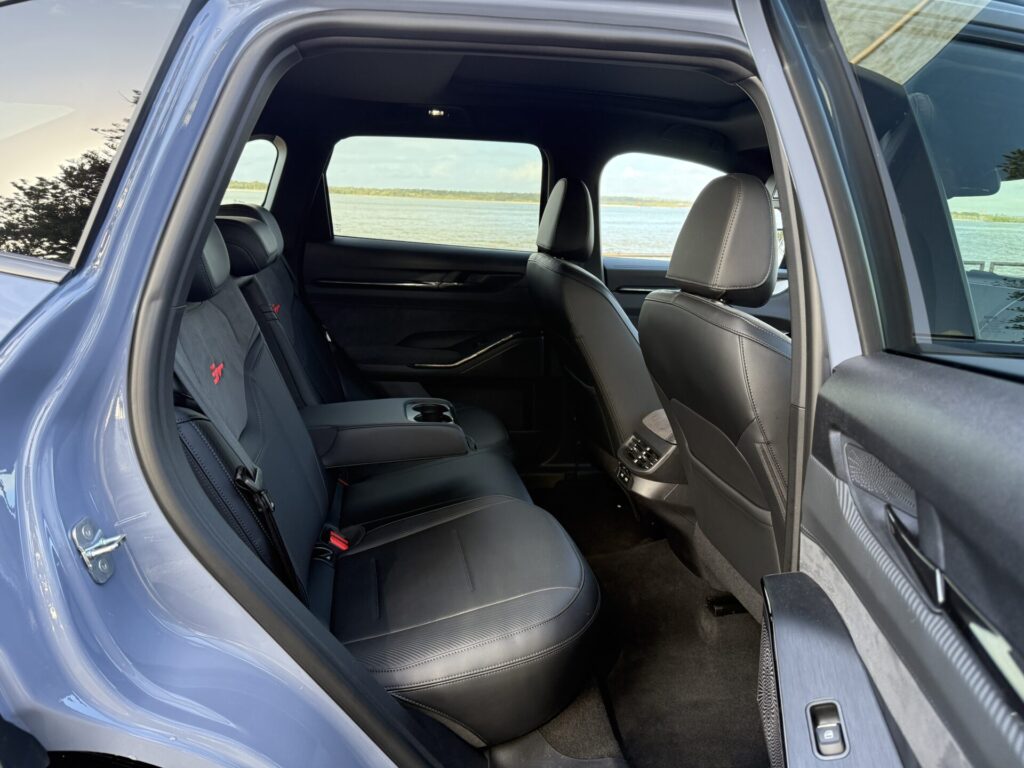
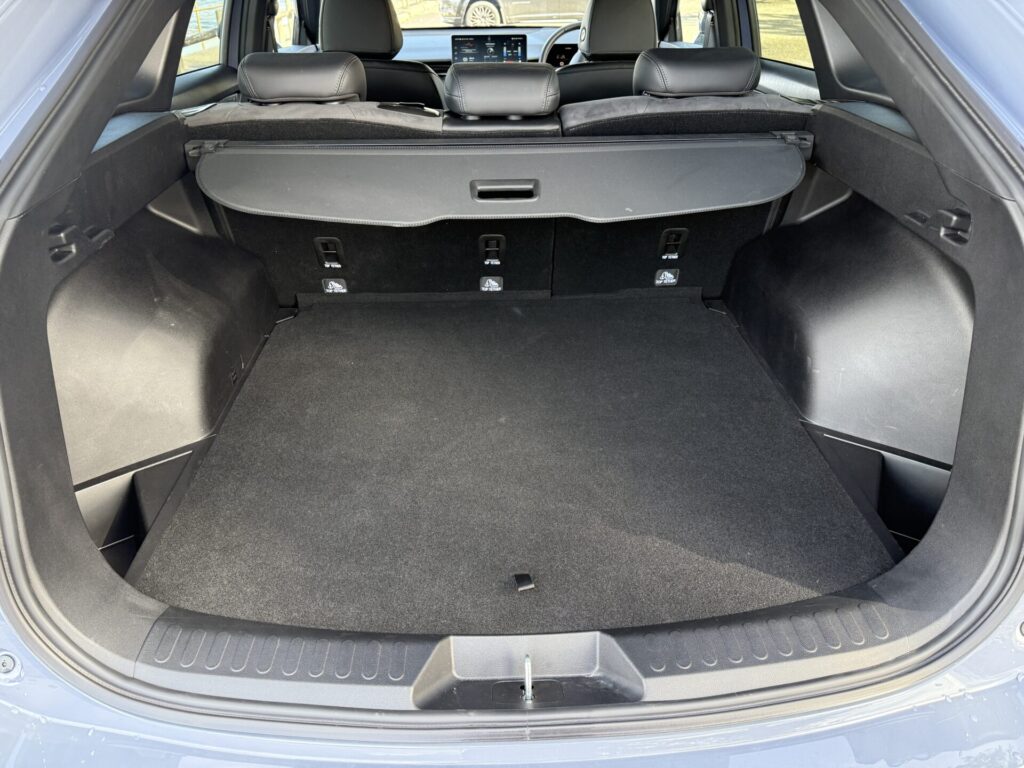
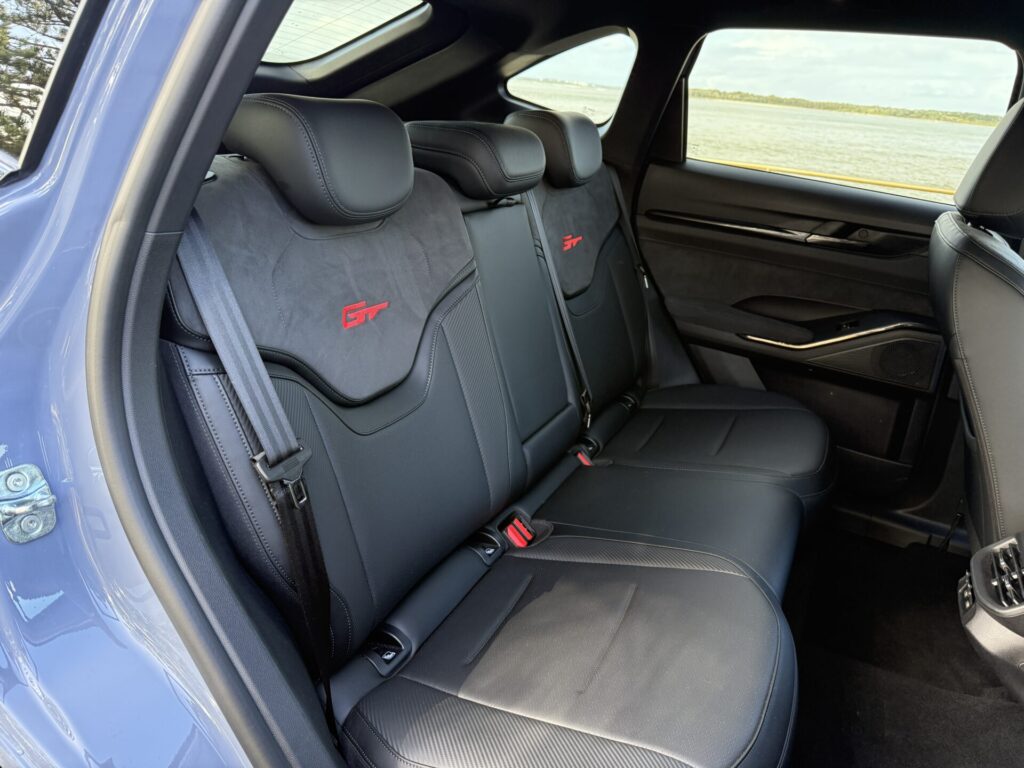
There’s an almost absurd amount of legroom in the back for a car this size, I was able to fit behind where I drive. I’m just under six feet tall/180cm and I had oodles of room. Audi Q7 levels almost. You can credit this to a reasonably hefty 2738mm wheelbase.
The cargo area is relatively modest at 392 litres with the second row in place and 1390 with the seats down. The drop in cargo space can be sheeted home to the huge-for-a-PHEV battery, which we’ll get to shortly.
Chassis and Drivetrain
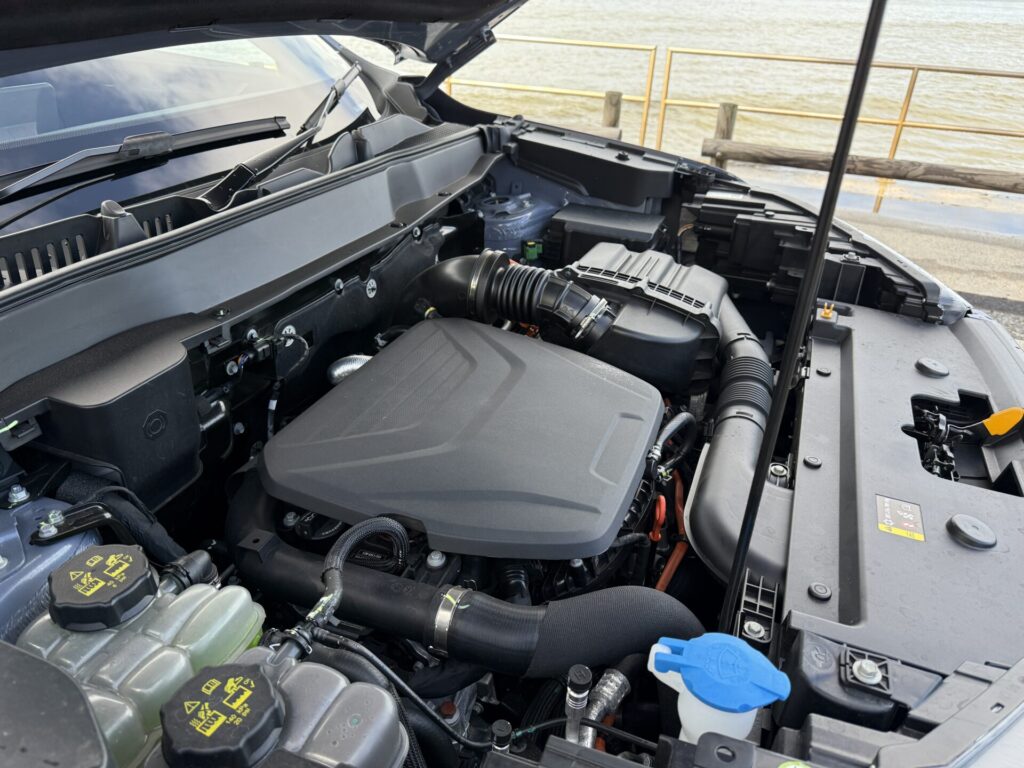
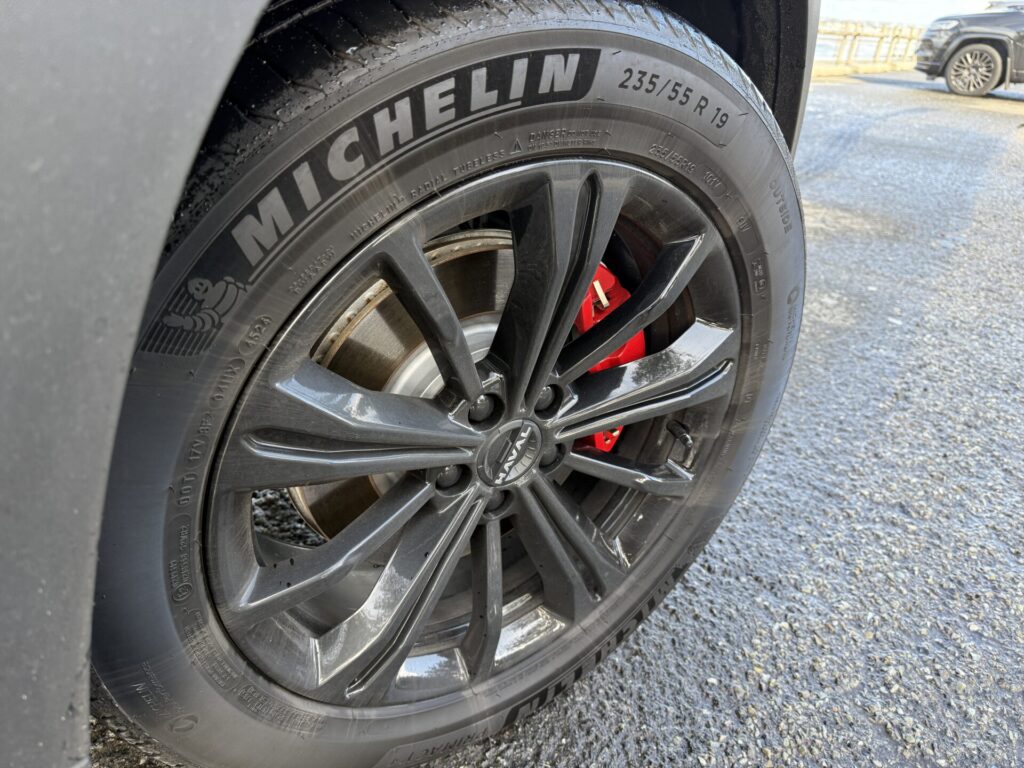
There’s not a huge amount to say about the chassis – it’s pretty conventional, rolling on decent 19-inch wheels shod with Michelin Primacy 4 tyres. These should be your first clue that the GT is more about spec than speed. Which is fine, obviously.
Having said that, it cracks the run to 100km/h in just under five seconds, which isn’t mucking about.
And that’s because it has a very powerful combination of petrol and electric with a whopper of a battery for good measure. The 1.5-litre turbo that replaces the 2.0-litre in the non-PHEV spins up 110kW and 230Nm, which isn’t a lot to shift two tons.
Luckily there is not one but two electric motors, one at the front and one at the back, delivering 130kW/300Nm and 135kW/232Nm respectively.
Altogether, Haval says the total system power – which in any other car you would call raucous – is 321kW. Yikes. That’s 440bhp. And a peak torque figure of 762Nm. You won’t get either of those figures all the time – obviously – but those numbers were not that long ago the preserve of twin-turbo V8s.
And, once you’re out of electrons, it is again. But hoo boy, when you’ve got a full battery, you’re in command of a lot of power.
As is Haval’s won’t, there’s a weird two-speed dedicated hybrid transmission driving all four wheels.
Battery and charging
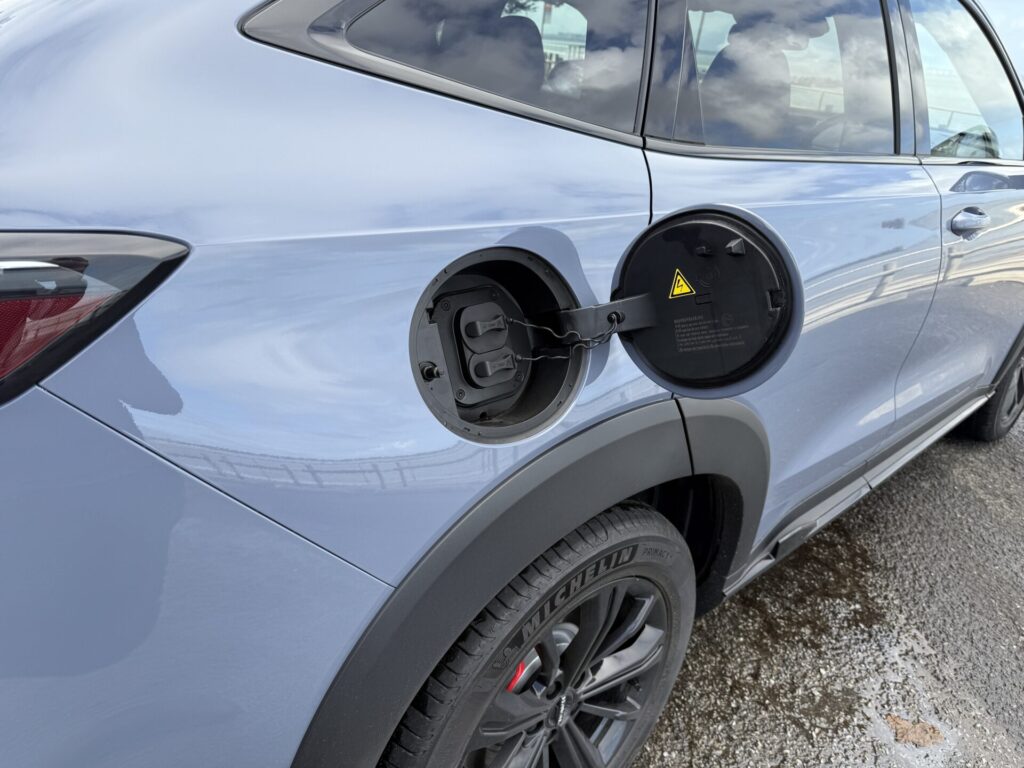

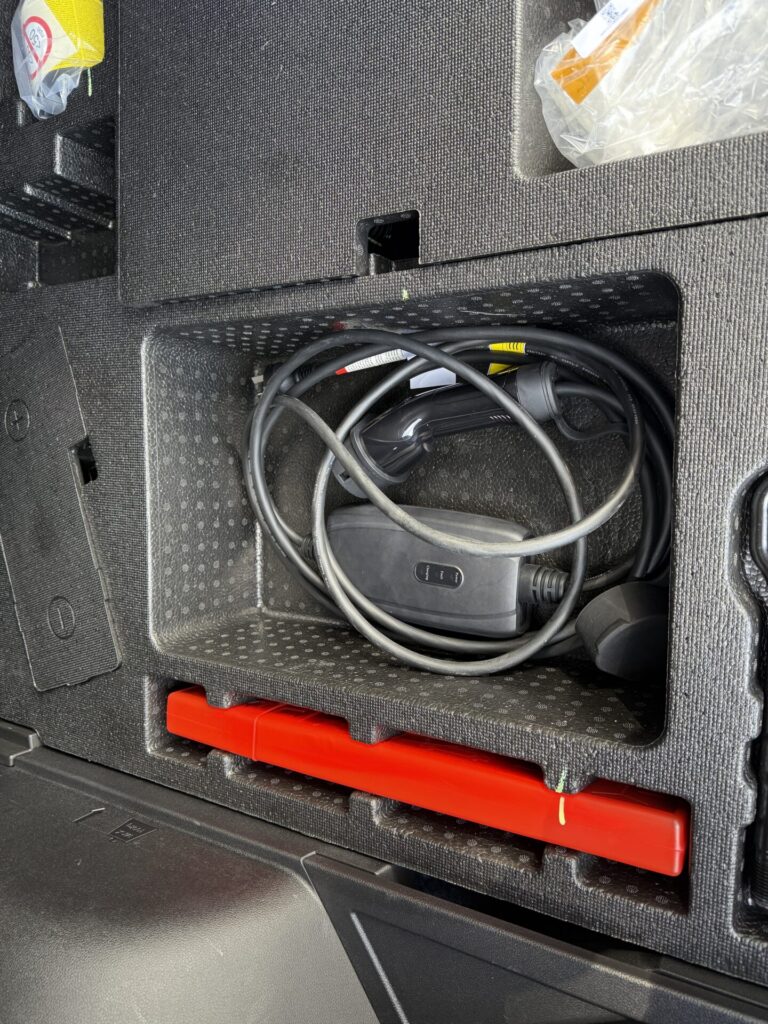
Hidden somewhere in there (yes, it’s under the boot floor) is a 34.5kWh battery. Early Nissan Leafs had smaller batteries. Absolute chungus of a battery.
It’s a whopper for a PHEV, anyway, delivering a claimed NEDC range of 180km. That’s pretty good, right?
Well, yeah if NEDC was in any way credible. Which is a touch harsh, but Tesla range figures in the US should be reason enough to add a note of caution. That would also suggest an EV consumption rate of 16.5kW/100km. With this kind of drag coefficient that is extremely unlikely.
Cheeringly, when I got in to the H6 it had a readout claiming 190km. I figured if it managed half of that, we’d be in very good shape, because for a lot of people, 95km is a fair chunk of a week’s motoring.
When I stepped into the fully charged H6 the odometer read 4015. When the battery hit its lower limit for electric-only motoring, the odometer read 4166. That’s 151km of electric range. I was genuinely shocked.
The fuel economy is split into two, which is inherently sensible. If you’re charged, you’ll consume a nominal 0.8L/100km and when the battery falls to its lower limit – from then on it will behave like a standard hybrid – Haval claims 5.4L/100km.
Unusually for a PHEV, the H6 has DC charging at up to 48kW, which means you’ll be done and dusted in under an hour at a 50kW charger. Even with the charge rate slowing as the battery approaches full, you’re doing okay.
Maximum AC charge rate is 6.6kW, so a good seven or eight hours is required to fill an empty battery. Closer to 12 if you don’t have a wallbox.
Driving
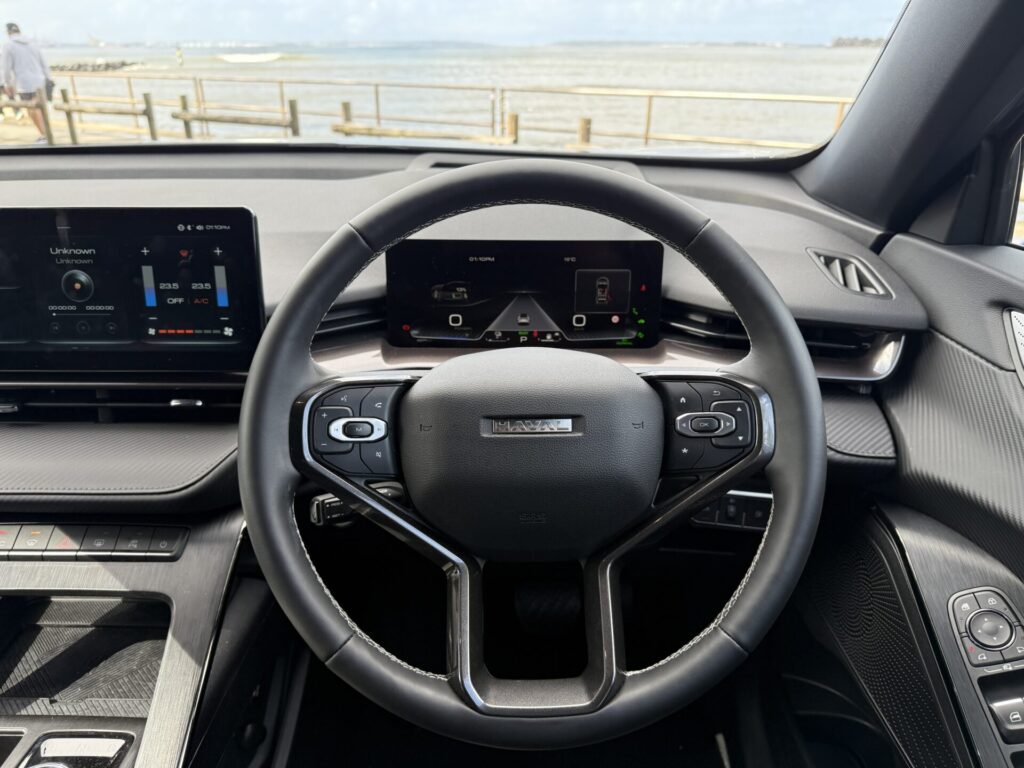
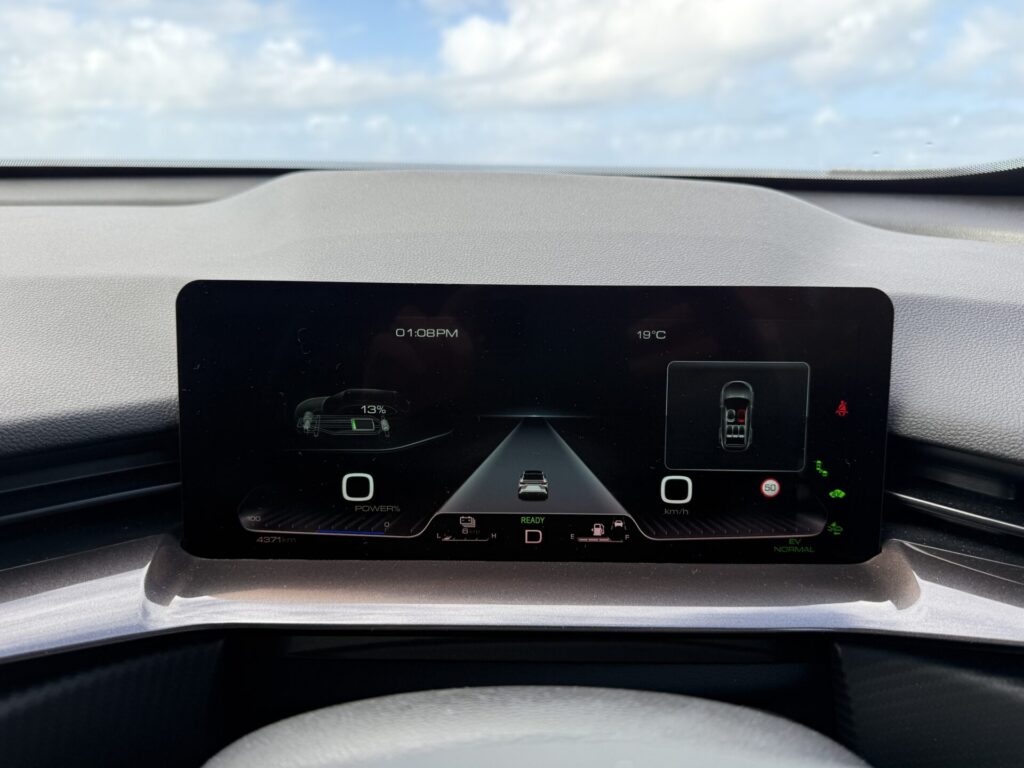
The biggest change between the petrol H6 GT, a not-great car, is the drivetrain. I am absolutely certain I drove petrol GT and reviewed it but cannot. Maybe it got taken down, I don’t know, but it was fine until you chucked it at a good road and the handling all fell apart. And I really didn’t like the grumpy engine and very ordinary gearbox.
The thing about Havals – or at least Jolions and H6s – it’s all about managing expectations. GWM is still a relative newcomer and so you have to think about what the intention of this car is.
So it will be of absolutely no value to trash the way this car handles. Because it isn’t an SQ5 or a X3 M in short pants despite the power outputs. The handling is, at best, lumpy when you start to push it. The way the car manages its two-plus tonnes is adequate at best as your ambitions rise.
It’s great fun planting this car off the lights or even firing out of roundabouts. It has so much grunt, whether the engine is on or not. I really enjoyed frightening folks in quicker machinery and the already-mentioned X3 30e wouldn’t stand a chance in a drag race.
The H6 rides really nicely and the worst bits of the way the petrol H6 drove have been well and truly eradicated.
Except, with electric operation and recovery, a very mushy brake pedal has been added to the mix. It really feels pretty awful, like sticking your foot into a bucket of jelly. The brakes work but there’s such an unpleasant feel I had to warn my wife of the excess squidge. It’s the car’s only real flaw and if someone could work out how to sort out the regen/physical braking transition, add more engine braking and sort out the pedal feel, job done.
I also don’t like the thin steering wheel and I don’t like its position – it feels a bit like a bus – and the stitching is scratchy.
Redline Recommendation

You can’t knock this thing for giving it a red-hot go.
The Haval H6 GT PHEV is an entirely useable, capable plug-in hybrid SUV. Keep it in its operating window, forgive it for a few of its quirks and you’ll be perfectly happy with this car. For its most obvious duty on the commute, the school run or the annual holiday, it will smash it.
It’s not my kind of car, but if this popped up in the rental lot, I’d be perfectly happy. I’d recommend it to friends who are keen for electrification but suffer from Tritium-induced range anxiety and who see cars as transport.
I went in with low expectations but came out shaking my head at how good it is at being a PHEV. It’s got a lot of competition coming down the pike, but as an opening shot, it’s a good one.
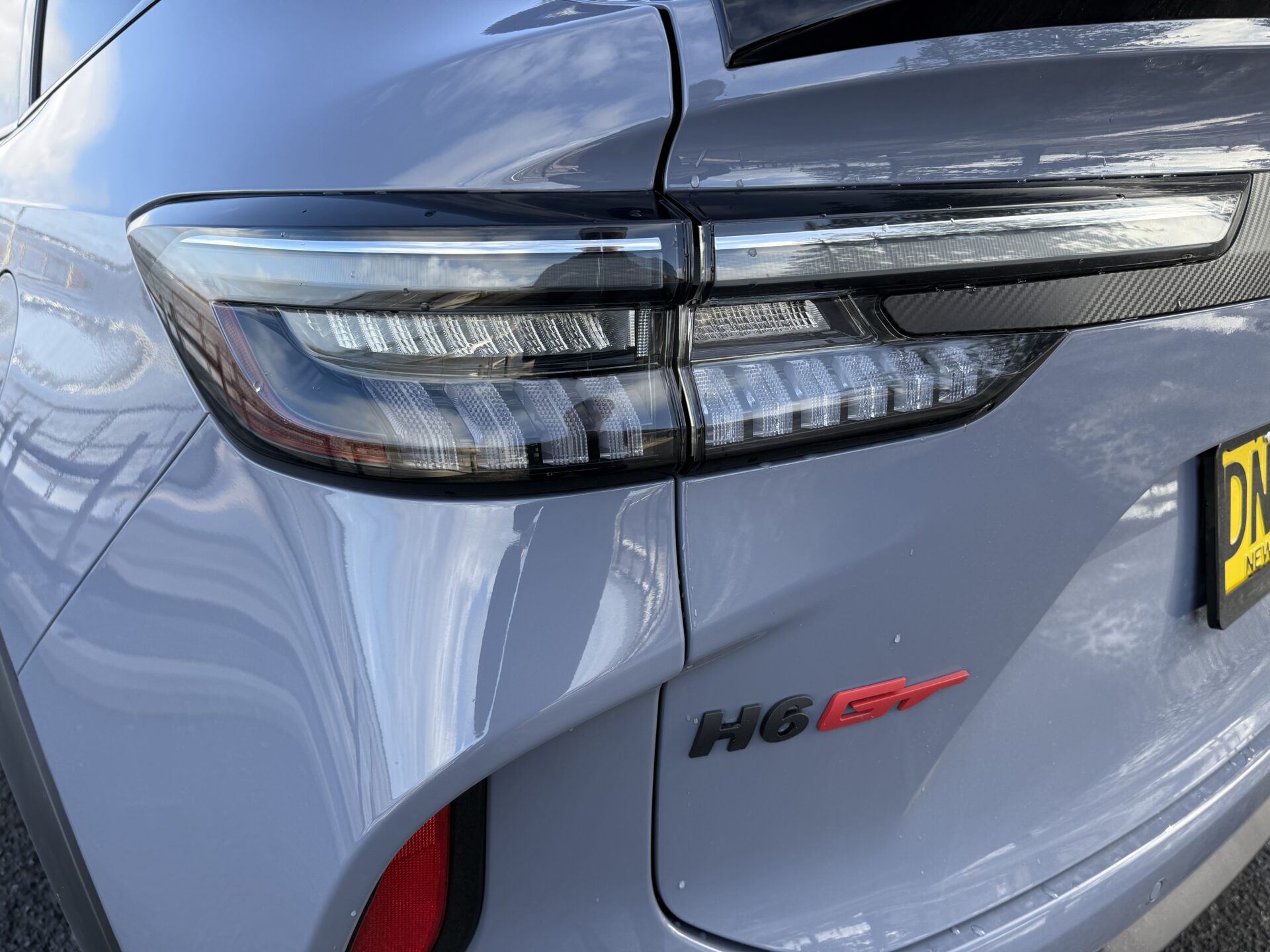
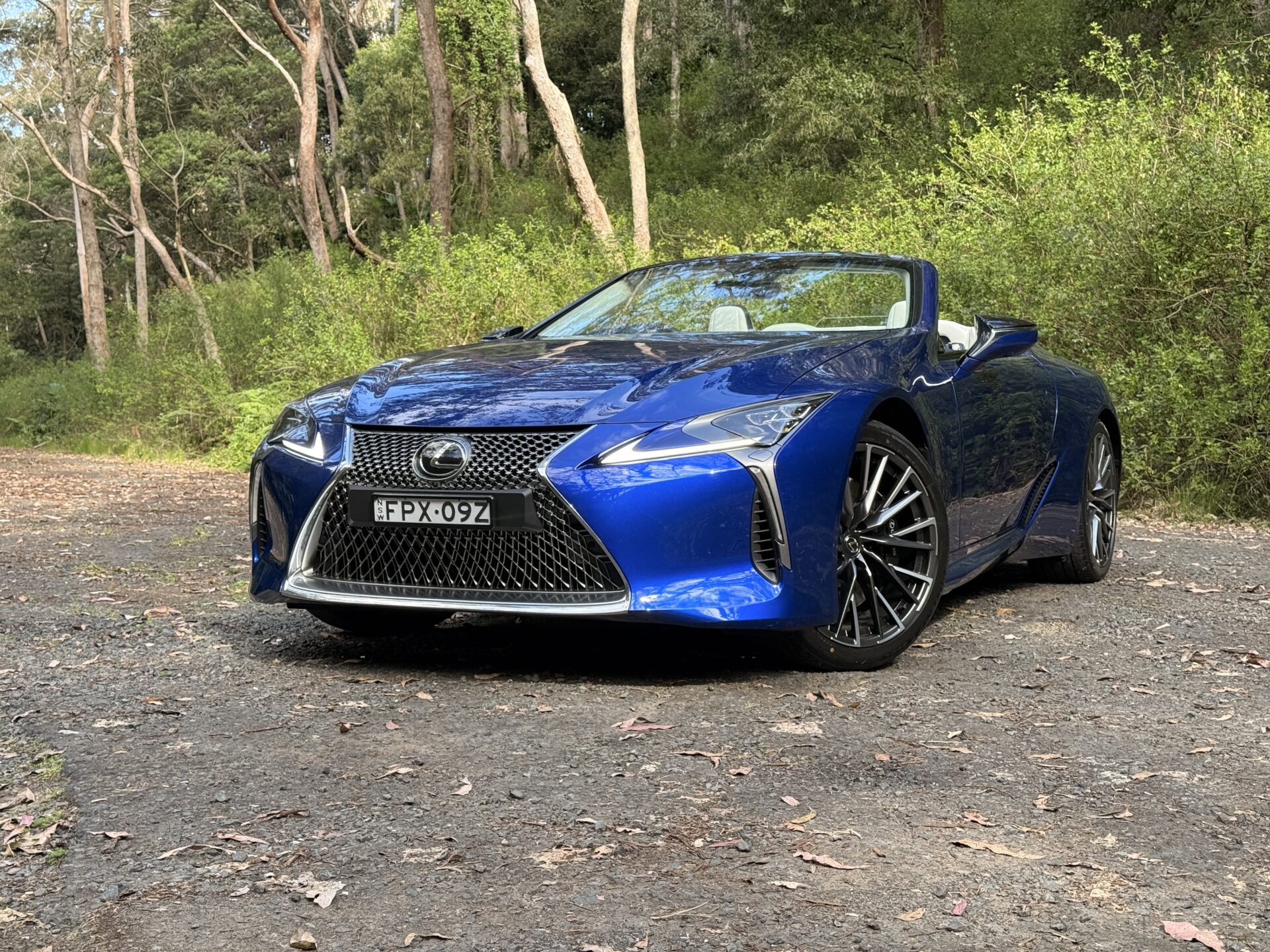
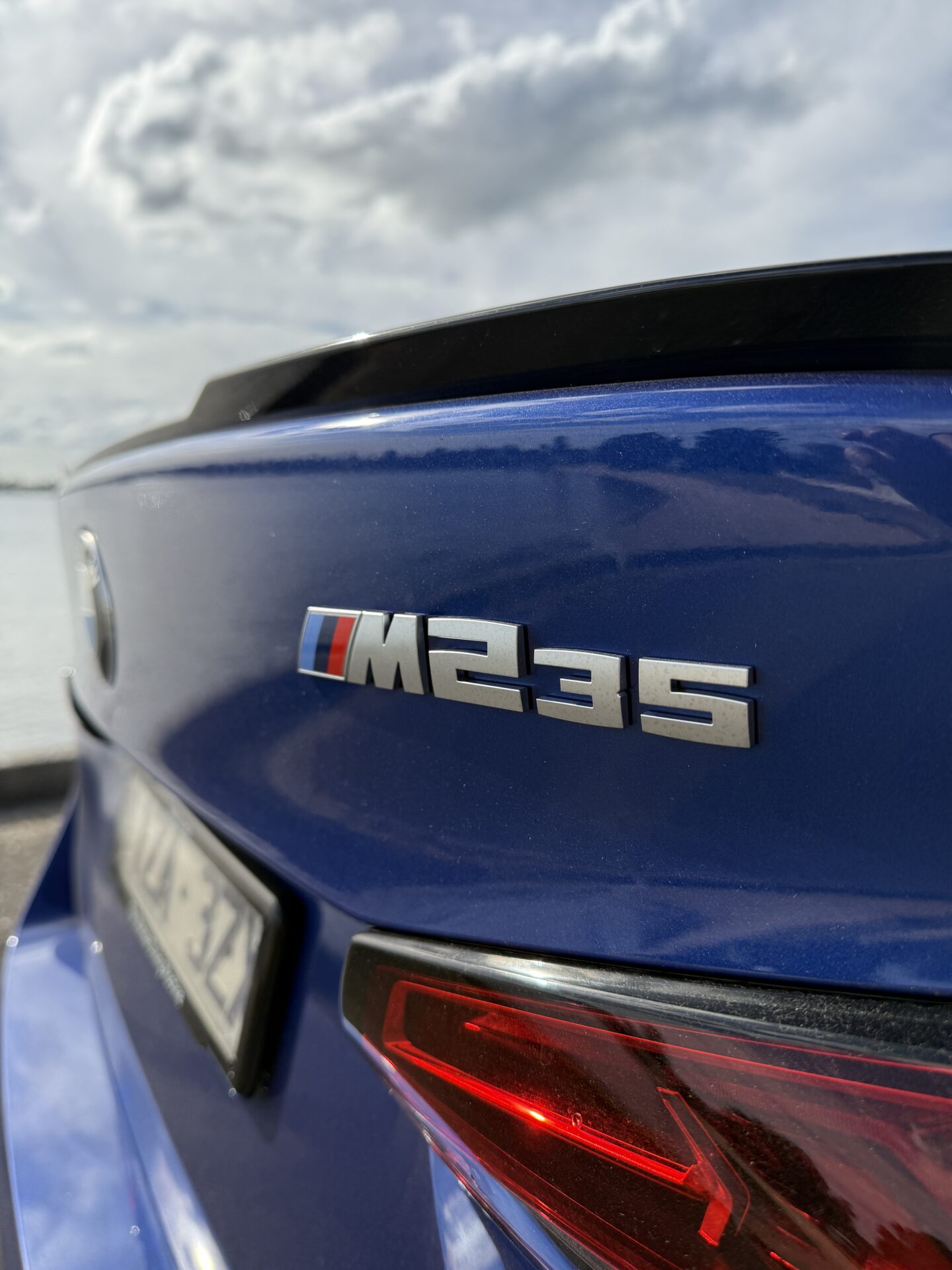
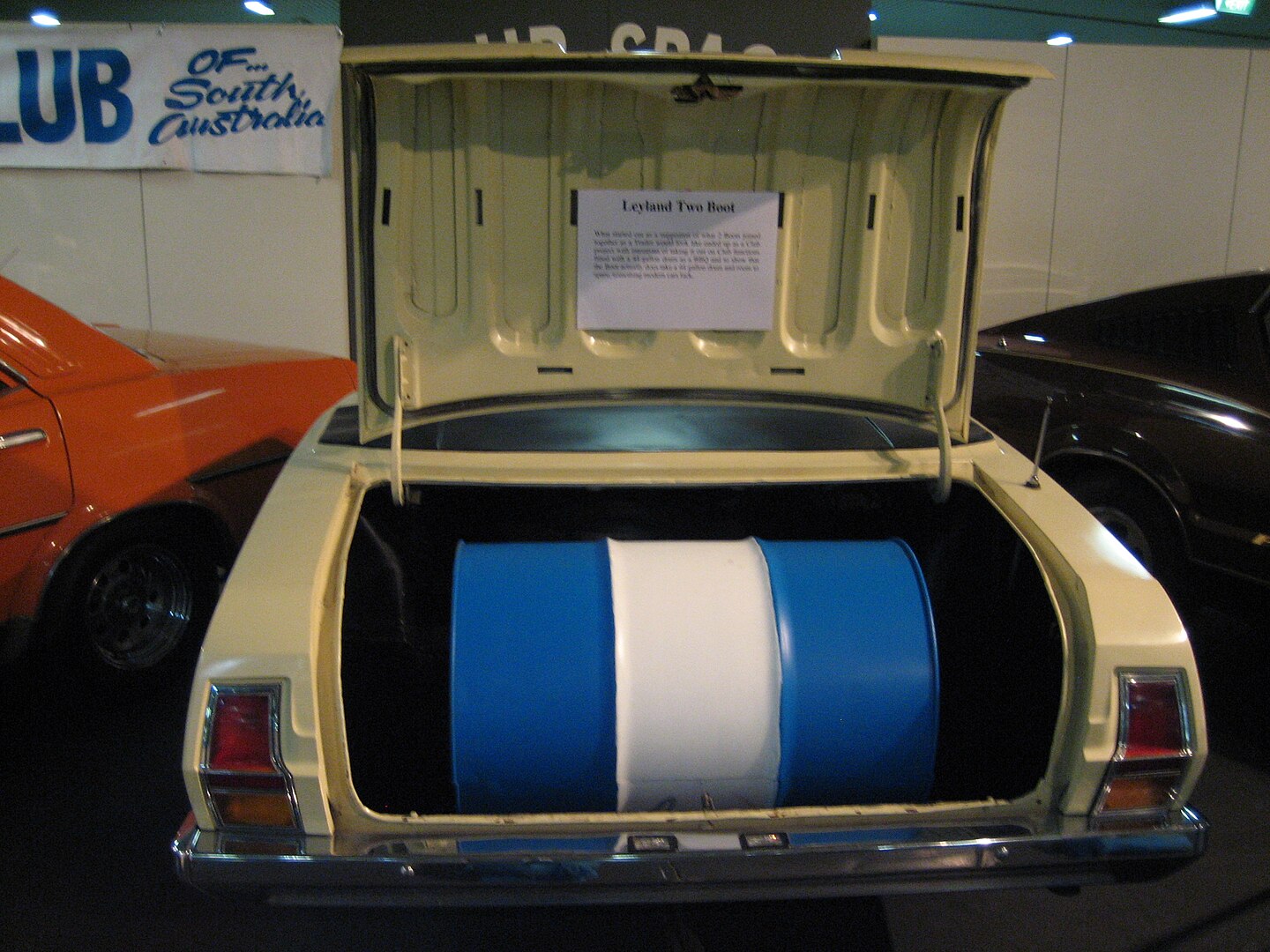

Leave a Reply